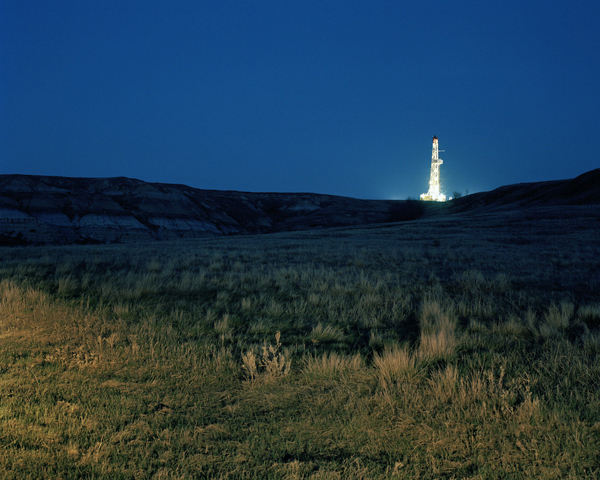When the Landscape is Quiet Again
Contact
Law Warschaw GalleryFine Arts Commons 105 651-696-6416
gallery@macalester.edu
facebook twitter instagram

WHEN THE LANDSCAPE IS QUIET AGAIN: PHOTOGRAPHS BY SARAH CHRISTIANSON
NOVEMBER 11–DECEMBER 11, 2016
Opening Reception: Friday, November 11, from 7 – 9 pm
Artists Talk: Thursday, November 17, at 7 pm
“We do not want to halt progress. We do not plan to be selfish and say, ‘North Dakota will not share its energy resource.’ No, we simply want to insure the most efficient and environmentally sound method of utilizing our precious resources for the benefit of the broadest number of people possible. And when we are through with that and the landscape is quiet again…let those who follow and repopulate the land be able to say, our grandparents did their job well. The land is as good and in some cases better than before.”
– North Dakota Governor Art Link, 1973
Since 2012, Sarah Christianson has been documenting the legacy of oil booms and busts in her home state. In particular, the artist is interested in how the region is currently undergoing change today due to horizontal drilling and hydraulic fracturing. Through long periods of investigation and documentation, her photographs bear witness to the transformation of western North Dakota from a quiet, agrarian landscape to that which is now an industrial zone – dotted with well sites, crisscrossed by pipelines, lit up by natural gas flares, and contaminated by oil and saltwater spills. At present, the Bakken oil field is pumping out over a million barrels per day from over 13,000 active wells, making North Dakota the second largest oil-producing state in the nation, closely following Texas.
Heightened industrial activities have brought a steady stream of revenue, people, and jobs to this economically depressed region. While workers come from far and wide, residents, too, are eager for a piece of the action. The artist wrestles with her own implication in the hidden costs of prosperity: since the start of the boom, her family has been profiting from oil wells drilled on the land where her great-grandparents homesteaded in 1912.
Experts originally anticipated that the ‘Bakken Boom’ would continue for several decades, but falling oil prices have triggered another bust—the third to happen in the state. In her work, Christianson examines the scars from North Dakota’s prior boom-and-bust cycles and the new wounds being inflicted upon her home. For the artist, the status quo must change; something needs to be left for the next generation, not the next quarter.
About Sarah Christianson
Sarah Christianson grew up on a four-generation family farm north of Fargo in North Dakota. Immersed in that vast expanse of the Great Plains, she developed a strong affinity for its landscape and stories. This connection to place and family has had a profound effect on her work. Despite moving to San Francisco in 2009, she continues to document the subtleties and nuances of the Midwestern landscape and experience through long-term projects.
Christianson earned an MFA in photography from the University of Minnesota in 2009. Her work has been exhibited, collected, and supported by a variety of institutions. Her first book, Homeplace, was published by Daylight Books in 2013.
This project was funded by an Individual Artist Commission grant of the San Francisco Arts Commission and an Investing in Artists grant from the Center for Cultural Innovation. Additional support was provided by RayKo Photo Center and in-the-field assistance was given by the Dakota Resource Council, the Killdeer Mountain Alliance, the Northwest Landowners Association, and numerous other individuals.
When the Landscape is Quiet Again: Photographs by Sarah Christianson exhibition and activities are sponsored in part by the Department of Environmental Studies and the Department of Sustainability at Macalester College.